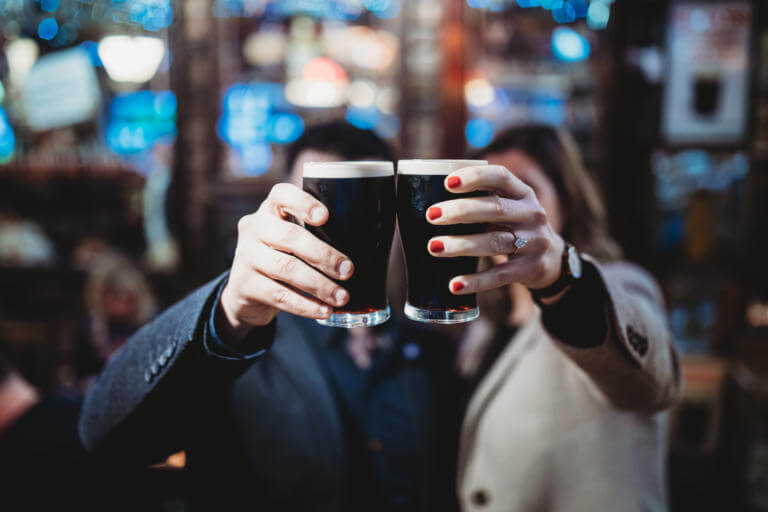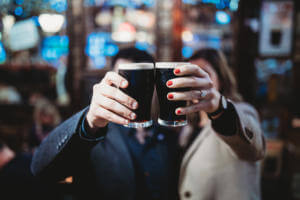Guinness Myths Busted
Guinness – has there ever been a beverage more revered, yet so misunderstood?
First originating in the merry old town of Dublin, Ireland in 1759, this mighty brew has gone on to become one of the most popular and iconic beers in history. With great popularity comes great mythology – so it is truly no surprise that this dry, dark stout has become somewhat of an enigma!
We’re here to dispel the mystery, so next time you sink a pint of this iconic Irish beer with your friends, you’ll be able to impress the whole gang.
Myth #1: Guinness only tastes good in Dublin
Perhaps this claim was made by someone working to promote Dublin’s tourism because there is very little evidence to suggest that this dark stout is only worth drinking in the Fair City.
While Guinness from its homeland may taste fresher than what we find on our shores, there is no reason to believe that if the kegs are stored properly, the beer is poured correctly, the lines are cleaned consistently and the taps function as they should – it shouldn’t taste deliciously flavourful.
It’s also important to not discount the possibility that Guinness can taste better in Dublin simply because the location’s associations make you believe it should taste better. Just as you could convince yourself that a croissant from Paris’ worst bakery tastes better than one from Australia’s best bakery – psychology is a powerful factor!
Myth #2: Guinness is high in alcohol
Dark beer = heavy alcohol content, right? Wrong!
You may be pretty shocked to hear that Guinness isn’t quite as boozy as your typical draught beer. While a pint of Swan lager carries a 5% ABV, Guinness pulls in at just 4.2%.
Guinness’ dark ruby hue comes from the rich, well-roasted barley rather than being heavy on the booze. The trick to its roasting process is ensuring the barley is black at the edge and brown inside to bring out all of those bold flavours and rich aromas of the stout we all know and love.
Myth #3: Guinness is high in calories
Let’s face it, stouts aren’t exactly known for being the dieter’s choice. With such a creamy texture and rich, malty caramel flavours, how can Guinness possibly be anything but a calorie-ridden delicacy?
Easily – in fact, a pint of this dark and sweet brew clocks in at just 125 calories which is 75 less than a pint of OJ! Most beers get their calories from their alcohol content so the fact that Guinness is relatively low in alcohol keeps those calories down.
And that thick and creamy texture? It’s all in the mix of both nitrogen and carbon dioxide for the carbonation process, making for a velvety mouthfeel without any additional calories.
Myth #4: Guinness is healthy
This myth has been circulating since 1920 when a famous print advertising campaign declared that ‘Guinness is good for you’. Back when the slogan was first coined, there was pretty much no evidence to back up this statement – it was little more than clever marketing!
Ok, so this hearty brew does have a surprising amount of immune-boosting antioxidants, including an array of probiotics, B vitamins, silicon and fibre. And, a University of Wisconsin study discovered that there may be evidence to suggest that drinking Guinness can help diminish the risk of heart attack, lower high cholesterol levels and reduce blood clots.
However – while it may appear to be a brew packed with benefits, beer is still beer and when binged, Guinness can have some pretty negative impacts on your liver. Like with anything in life, Guinness is best served in moderation so you can enjoy all of the perks without any of the damage.
Want to try this iconic Irish brew on tap? At Barons Beverage Services, we can set you up with a pretty nifty home dispense system, so you can bring a little bit of Dublin to your backyard and experience all the flavour of Guinness – just as the brewer intended.


